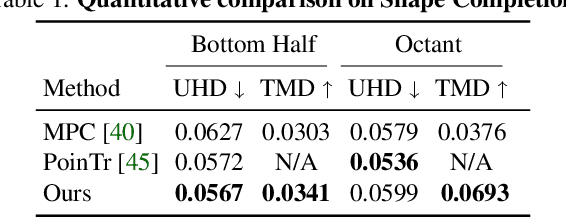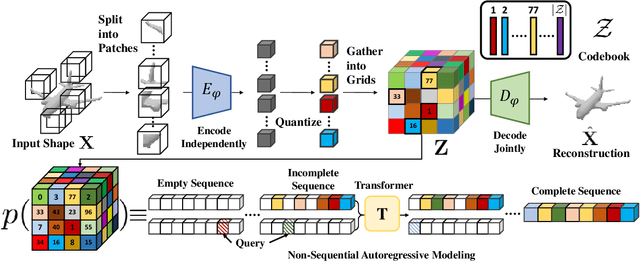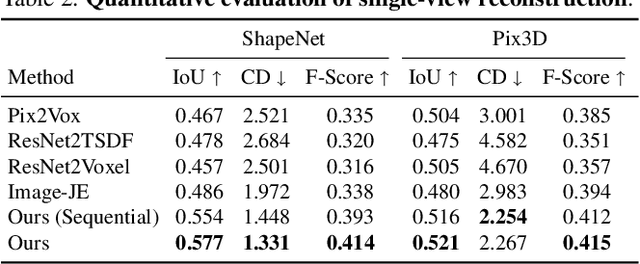Paritosh Mittal
AutoSDF: Shape Priors for 3D Completion, Reconstruction and Generation
Mar 17, 2022



Abstract:Powerful priors allow us to perform inference with insufficient information. In this paper, we propose an autoregressive prior for 3D shapes to solve multimodal 3D tasks such as shape completion, reconstruction, and generation. We model the distribution over 3D shapes as a non-sequential autoregressive distribution over a discretized, low-dimensional, symbolic grid-like latent representation of 3D shapes. This enables us to represent distributions over 3D shapes conditioned on information from an arbitrary set of spatially anchored query locations and thus perform shape completion in such arbitrary settings (e.g., generating a complete chair given only a view of the back leg). We also show that the learned autoregressive prior can be leveraged for conditional tasks such as single-view reconstruction and language-based generation. This is achieved by learning task-specific naive conditionals which can be approximated by light-weight models trained on minimal paired data. We validate the effectiveness of the proposed method using both quantitative and qualitative evaluation and show that the proposed method outperforms the specialized state-of-the-art methods trained for individual tasks. The project page with code and video visualizations can be found at https://yccyenchicheng.github.io/AutoSDF/.
Deep Fence Estimation using Stereo Guidance and Adversarial Learning
Jul 03, 2020



Abstract:People capture memorable images of events and exhibits that are often occluded by a wire mesh loosely termed as fence. Recent works in removing fence have limited performance due to the difficulty in initial fence segmentation. This work aims to accurately segment fence using a novel fence guidance mask (FM) generated from stereo image pair. This binary guidance mask contains deterministic cues about the structure of fence and is given as additional input to the deep fence estimation model. We also introduce a directional connectivity loss (DCL), which is used alongside adversarial loss to precisely detect thin wires. Experimental results obtained on real world scenarios demonstrate the superiority of proposed method over state-of-the-art techniques.
 Add to Chrome
Add to Chrome Add to Firefox
Add to Firefox Add to Edge
Add to Edge